Hinds Hall, Syracuse University campus, 2:48 am ET November 11 – Three in the morning is a magical time. There’s a certain weightlessness about 3 am, when you’re up all night working on a huge project, after midnight has hurdled you into the great unknown, when you realize you’re reaching maximum altitude and every action seems effortless. Inertia seems to carry you forward, and for a few moments, it’s as though your body were floating in front of you.

From the point of view of 3 am, everything seems equalized. The pressure subsides, a new rhythm enters your head, and only tomorrow exists. For the students cranking away at the MLB.com University Challenge, there’s no question any more about which way to go. That decision was already made, the booster stage has already blasted off, and from here until the rest of the project, they’ll be feeling more and more like passengers.
Editor’s note: This story is part of a series we call Redux, where we’re re-publishing some of our best posts of 2011. As we look back at the year – and ahead to what next year holds – we think these are the stories that deserve a second glance. It’s not just a best-of list, it’s also a collection of posts that examine the fundamental issues that continue to shape the Web. We hope you enjoy reading them again and we look forward to bringing you more Web products and trends analysis in 2012. Happy holidays from Team ReadWriteWeb!

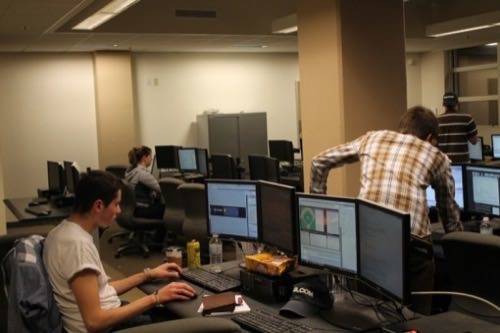
Team “Winston” is now committed to a Flash-based interactive mockup of its “game within a game.” They’ve moved from one of the conference rooms to one of the open iLabs, where each terminal has dual monitors, the air circulates a little more, and there’s the sound of other students in the hallways to keep you from feeling you’re in a cavern.

Ross is driving “Winston’s” vision with his trademark laser-like precision and intensity. You get the feeling that, if he were your younger brother, he’d still be badgering you like your older one.
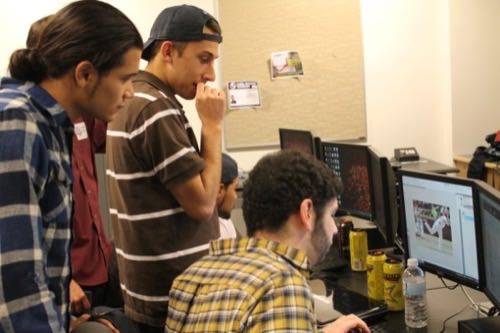
Elsewhere in the iLabs, the “Web Gems” have hit upon an HTML5 motif. They’ve seen some impressive demos of layering, where separate elements can scroll at different speeds, creating a Disney-like rotoscoping effect.
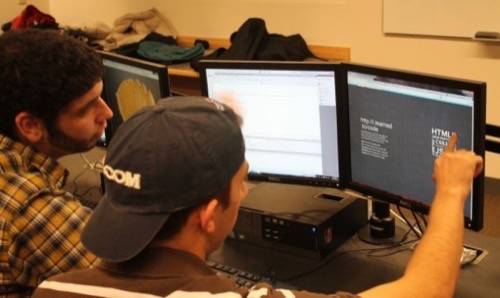
Right now, they’re scrolling everything they can find, and they’re raiding the Web for photos. What they don’t have in mind quite yet is an application for their vision, but they know they have a technology and they’re storing up the energy to drive it. Which makes “Web Gems” like a great many Silicon Valley startups.
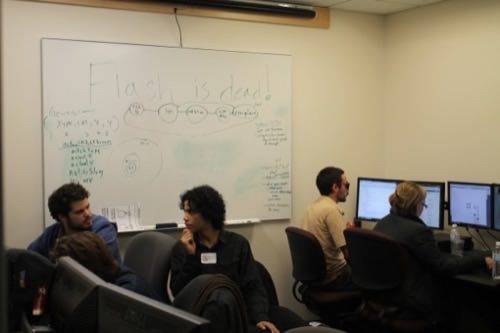
“The Walkoffs” have the most experienced talent in the game: two of them graduate students, one of them a senior majoring in aerospace engineering, one a senior majoring in architecture. And Reynaldo, the only sophomore, is the expert on the Android SDK. Chris, a library science major, is a JavaScript expert. His vision is to create a fully working mockup, not using Flash, but real events captured by the browser, processed, then rendered using jQuery.
Like a battle cry for the ages, Chris has emblazoned along the top of the whiteboard in his cramped lab room, “Flash is dead!” You can see the remnants of impromptu lectures he’s been giving on JavaScript events architecture. He’s teaching Deven, a computer science major but not yet the jQuery expert, how the jQuery syntax simplifies itself by chaining new methods onto the end of the results of earlier ones. The trick they’re working on at the moment, apparently, is knowing the variable type of the returned value before passing it to the next method.
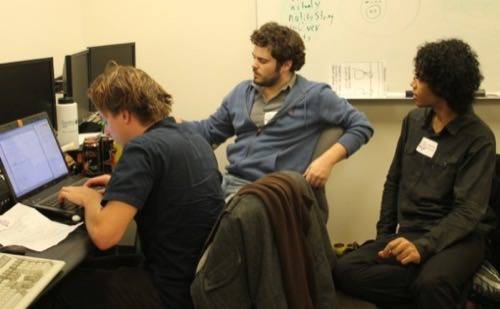
It’s not the type of subject matter that keeps Deven’s eyes from glazing over at 3:30. He’s starting to switch to autopilot mode, as they engage the help of Reynaldo’s Droid phone, which is hooked up via USB cable. They’re trying to find which events fire at what times, so they can chain the events to one another in jQuery in the right order. This way, if they’re successful, they might be the only team to show their real-world mockup not on an SDK, but with an actual, live smartphone demo.

They’re not seeing the results they’re looking for, and they’re starting to blame the Android operating system. There’s too many simultaneous versions, Chris notes, so some phones may fire events that are recognized by jQuery 1.7, and some won’t. That’s a problem in the end, because Chris wants believability. He doesn’t want to say his team’s demo can do something, if it can’t work on a Droid.
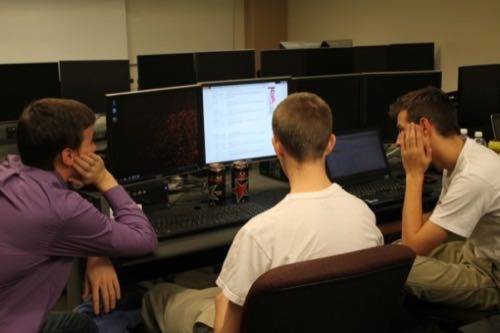
“Rubin’s Army” is spinning out. They’ve abandoned their previous ideas, and now they’re scanning through the history page of the existing MLB.com in search of clues for where to go now. Their palms are telling them the only place they’d really like to go contains pillows.
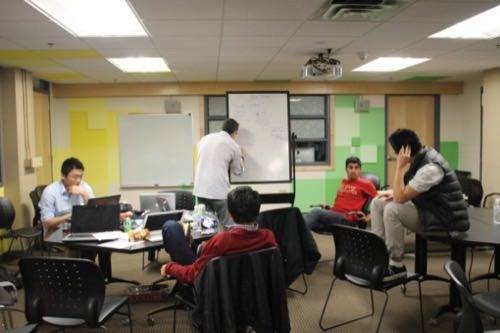
“SRFA” is made up of management and entrepreneurship majors, who also happen to be dedicated console gamers. They know the Asian games market as well as, if not better than, the U.S. market. And German (pronounced “H-herr-mann,” he tells me, with Ricardo Montalban’s accent) has hit upon a market need he’d like to fill: There’s no franchise game for smartphones in the U.S. based on Major League Baseball. Ironically, there is one in South Korea, and it’s a huge hit.
From German’s perspective, it’s a no-brainer: Obviously the MLB franchise needs a smartphone game. So instead of writing one, think like a businessman, he proposes. Buy the two existing games that are already written and already supported. Merge the best parts of both into a single unit, and market it as “MLB: Challenge.” Launch it online with a downloadable component at a low $5 price point.
It would solve the problem of having to create a mockup, German reasons, as he begins listing the reasons for doing it on the whiteboard he is now the unchallenged master of. Why mock up something that’s already a huge hit? There is the problem of tying it in with the MLB.com Web site, the others point out. Don’t focus on it as a problem, German posits like a marketing specialist, but recast it as a solution. MLB.com doesn’t have a smartphone game. That’s a market void. Here’s something to fill it. Bam.
For some reason, it’s hard to sit through marketing jargon when the clock on the wall says 4 am. Funny, but at 3 am, the world seemed so effortless. Now all of a sudden, “vertical” is a direction that takes many opposing angles at once. And horizontal is starting to look like the best one of all.










